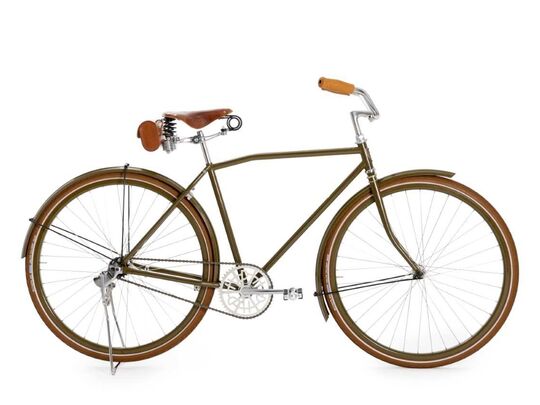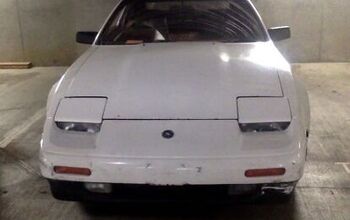Ailing Motorcycle Industry Could Be Canary in Coal Mine for Automakers

If you think car enthusiasts are a dying breed, you should take a look at motorcyclists. The two-wheeled industry is in serious trouble. A total failure in marketing occurred over the past decade. New riders aren’t coming in fast enough to replace the glut of Baby Boomers rapidly aging out of the market, and there’s a looming paranoia that self-driving vehicles could push bikes off the road entirely.
In 2017, U.S. motorcycle sales were down 11 percent, and no company was hit harder than Harley-Davidson. The brand has the oldest consumer base and has repeatedly failed at recruiting younger riders. While it builds a fine product, it’s not one that appeals to millennials. This generational cohort proved hesitant to engage in motorcycling as a pastime — a situation not helped by having less disposable income than Generation X or the Boomers did at the same stage in their lives. Young women are also poised to start out-earning young men, and few brands have successfully tapped into the female demographic.
Harley attempted to solve this problem by offering some of the least expensive models in decades, but it wasn’t enough. Millennials just aren’t as interested in motorcycles, especially not high-end examples. So the company reverted to its roots and began building bicycles again.
While the brand has always emphasized its engines, there was a period shortly after World War I when the company also manufactured pedal-powered two-wheelers. However, the era wasn’t long or illustrious enough to make it an ardent part of its heritage. In fact, those bicycles only existed as a way to introduce new riders to the brand.
It was a marketing tactic, and it’s easy to see the new bikes as following a similar strategy. According to the Milwaukee Journal Sentinel, the brand has begun producing hand-built tribute bicycles that match the Model 7-17 Standard manufactured in 1917. Displayed and sold at the Harley-Davidson Museum, they’ll run for roughly $4,200 apiece.
As a company, Harley remains largely obsessed with its past. The replica bicycles are no different in that respect, though they do offer an opportunity for Harley to reach out to the younger demographic the company needs to solidify its future. The first bicycle goes on display at the museum this Thursday and the Wisconsin Bike Fed has scheduled a group ride that afternoon. Anyone who shows up on the museum under pedal power will receive a discount on the museum entrance fee.
Harley-Davidson cut 800 jobs earlier this year and suffered a 12 percent sales loss in the first quarter of 2018, so this isn’t going to turn the tide. Still, it’s a start. Motorcycle manufacturers focused on their existing consumer base for far too long. They need fresh blood and oversized, expensive models aren’t going to bring those buyers in. Nobody starts riding at 40 and few adults under 23 can rationalize the purchase of a $9,000 (or higher) motorcycle anymore.
Japanese companies seem to understand this, and it’s reflected in the small, easily accessible models pouring out of that country. A decade ago, most companies had just one bike under 250cc for novice riders. The next step up was a big one and usually represented something that was twice the size and power — and a quite a bit more expensive.
Things are different now. Suzuki, for example, offers several models at or below 250cc and $4,500. They come in wide away of styles, too. There’s the retro-inspired TU250X, sporting GSX250R, dirt-friendly VanVan 200, and well-rounded GW250. Honda did the same by offering North America even smaller/cheaper models like the funky little Monkey, historic Super Cub, and microscopic Grom. But it has also added a few 300cc units to round out its new-rider program.
Yamaha and Kawasaki followed suit to varying degrees — and so has Harley-Davidson, only to a much lesser extent. HD’s smallest offering is a 500cc standard with an MSRP of $6,899.
However, a lot of the damage has been done. Motorcycle manufacturers spent over a decade chasing bigger bikes and older, more affluent customers. They aren’t going to be able to recoup the older millennials they lost along the way. This is a cautionary tale for automakers that are doing the same thing.
The average new car transaction price in the United States was above $35,000 last year. If you take the average price from 1970 and adjust for inflation, that number should be around $23,500. If you’re curious, the ATP of a new vehicle in 1980 would be about $22,800 in today’s dollars. But things start to get expensive after that, so why does it seem like we’re only feeling the pinch now?
Baby Boomers could more easily afford elevated auto prices because they earned so much. Millennials cannot. The median household incomes for the latter generation are 20 percent lower than Boomers at the same stages in life. It’s definitely a contributing factor to the industry’s current sales slump, and could be a sign of dire times ahead.
That is, of course, unless autonomous vehicles totally reshape the market. Automakers seem poised to dive into big data and self-driving taxi services as a replacement to traditional ownership. If that goes to plan, they’ll earn a sizable chunk of change from selling your personal information, advertising, and charging you per-trip transaction fees. You’ll be their slave, but at least they won’t have to account for selling cars young people couldn’t afford.
If the brave new world they’re promising takes longer than expected or doesn’t pan out, we just might see the industry kicking itself for alienating an entire generation of consumers — just like the motorcycle business is now.
[Images: Harley-Davidson; Honda]

A staunch consumer advocate tracking industry trends and regulation. Before joining TTAC, Matt spent a decade working for marketing and research firms based in NYC. Clients included several of the world’s largest automakers, global tire brands, and aftermarket part suppliers. Dissatisfied with the corporate world and resentful of having to wear suits everyday, he pivoted to writing about cars. Since then, that man has become an ardent supporter of the right-to-repair movement, been interviewed on the auto industry by national radio broadcasts, driven more rental cars than anyone ever should, participated in amateur rallying events, and received the requisite minimum training as sanctioned by the SCCA. Handy with a wrench, Matt grew up surrounded by Detroit auto workers and managed to get a pizza delivery job before he was legally eligible. He later found himself driving box trucks through Manhattan, guaranteeing future sympathy for actual truckers. He continues to conduct research pertaining to the automotive sector as an independent contractor and has since moved back to his native Michigan, closer to where the cars are born. A contrarian, Matt claims to prefer understeer — stating that front and all-wheel drive vehicles cater best to his driving style.
More by Matt Posky
Latest Car Reviews
Read moreLatest Product Reviews
Read moreRecent Comments
- Dave M. IMO this was the last of the solidly built MBs. Yes, they had the environmentally friendly disintegrating wiring harness, but besides that the mechanicals are pretty solid. I just bought my "forever" car (last new daily driver that'll ease me into retirement), but a 2015-16 E Class sedan is on my bucket list for future purchase. Beautiful design....
- Rochester After years of self-driving being in the news, I still don't understand the psychology behind it. Not only don't I want this, but I find the idea absurd.
- Douglas This timeframe of Mercedes has the self-disintegrating engine wiring harness. Not just the W124, but all of them from the early 90's. Only way to properly fix it is to replace it, which I understand to be difficult to find a new one/do it/pay for. Maybe others have actual experience with doing so and can give better hope. On top of that, it's a NH car with "a little bit of rust", which means to about anyone else in the USA it is probably the rustiest W124 they have ever seen. This is probably a $3000 car on a good day.
- Formula m How many Hyundai and Kia’s do not have the original engine block it left the factory with 10yrs prior?
- 1995 SC I will say that year 29 has been a little spendy on my car (Motor Mounts, Injectors and a Supercharger Service since it had to come off for the injectors, ABS Pump and the tool to cycle the valves to bleed the system, Front Calipers, rear pinion seal, transmission service with a new pan that has a drain, a gaggle of capacitors to fix the ride control module and a replacement amplifier for the stereo. Still needs an exhaust manifold gasket. The front end got serviced in year 28. On the plus side blank cassettes are increasingly easy to find so I have a solid collection of 90 minute playlists.






































Comments
Join the conversation
Harley doesn't build a fine product. It crude and primitive (two cylinder engine!) and punishing to ride. Tush powder is standard issue for Harley riders. Many Harley riders love to blast their exhaust sound at everyone in sight. Not exactly being good to your neighbors. Harleys sell on nostalgia and image. Very few people under 40 years of age are attracted to the James Dean/Harley image.
I live with a diverse group of people in their mid-20s, and it's been eye-opening (I'm in my early 30s). Expensive, non-essential possessions like new cars and motorcycles are totally off their radar. The money they have left over after paying for rent and student loans, they would rather use on travel, concerts, yoga/rock climbing classes, and going out. We live in Los Angeles, so everyone does plenty of driving, but a car is seen as 100% utility -- nothing more. Nobody cares about having something new, trendy, or fancy. Sure, it makes sense that motorcycle sales are down -- bikes are pretty inessential, and a lot more of a hobby than car ownership. But this generation has no attachment to cars. If they could ditch their cars and affordably ride Uber/Lyft everywhere, they would in a heartbeat. Is there anything wrong with that? Of course not! Every generation has different priorities. If anything, it's a good thing they they value good times over material goods. But I definitely think car makers should be wary. The day personal car ownership becomes non-essential -- whether by self-driving Lyfts or better public transportation -- lots of young people are going to unload their wheels and never look back.